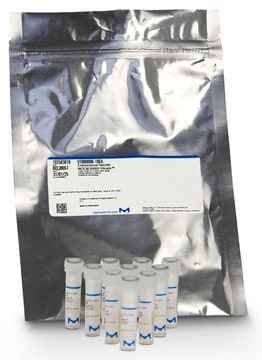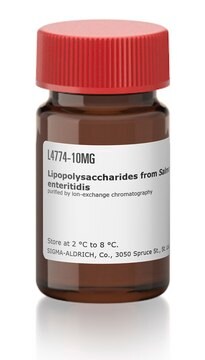L4268
Lipopolysaccharides from Klebsiella pneumoniae
purified by phenol extraction
Sinónimos:
LPS
About This Item
Productos recomendados
biological source
bacterial (Klebsiella pneumoniae)
Quality Level
form
lyophilized powder
purified by
phenol extraction
impurities
<3% Protein (Lowry)
color
white to faint yellow
solubility
water: 4.90-5.10 mg/mL, slightly hazy to turbid, colorless to faintly yellow
shipped in
ambient
storage temp.
2-8°C
¿Está buscando productos similares? Visita Guía de comparación de productos
General description
Biochem/physiol Actions
Preparation Note
Other Notes
Storage Class
11 - Combustible Solids
wgk_germany
WGK 3
flash_point_f
Not applicable
flash_point_c
Not applicable
ppe
Eyeshields, Gloves, type N95 (US)
Certificados de análisis (COA)
Busque Certificados de análisis (COA) introduciendo el número de lote del producto. Los números de lote se encuentran en la etiqueta del producto después de las palabras «Lot» o «Batch»
¿Ya tiene este producto?
Encuentre la documentación para los productos que ha comprado recientemente en la Biblioteca de documentos.
Los clientes también vieron
Nuestro equipo de científicos tiene experiencia en todas las áreas de investigación: Ciencias de la vida, Ciencia de los materiales, Síntesis química, Cromatografía, Analítica y muchas otras.
Póngase en contacto con el Servicio técnico


